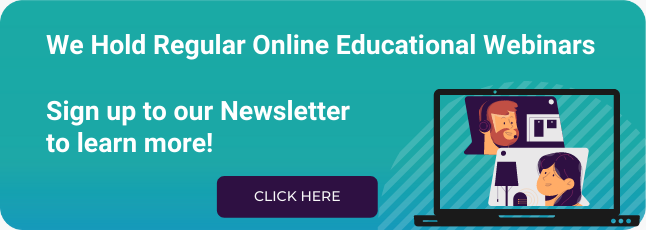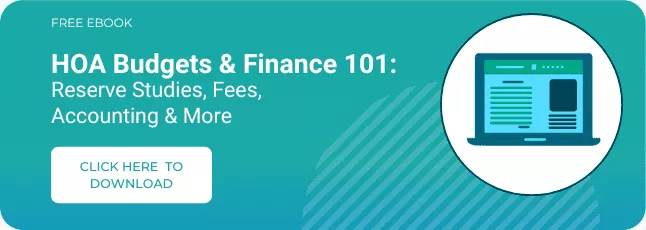An HOA balance sheet is a financial statement that gives you a clear picture of your association’s spending at a specific point in time.
Most organizations use balance sheets to track their expenditure and make informed decisions. Understanding financial information can be overwhelming when you are not used to it. To feel more comfortable, HOA board members need to learn how to interpret their community’s financial records.
This blog post covers the different elements of an HOA balance sheet. You will also learn how to generate one efficiently and identify issues when it doesn’t balance.
Understanding how an HOA balance sheet is structured
As you may know, an HOA balance sheet has two sides. The left side shows the association’s assets. On the right side, you will find the liabilities and equity. A balance sheet is based on a simple accounting equation:
Assets = Liabilities + Equity
As you can see in this formula, both sides should balance out. This means the total of your assets should equal your liabilities and equity combined.
A balance sheet should always balance. If it doesn’t, it means there is an error somewhere. A common mistake is omitting or recording transactions incorrectly.
Now, let’s learn more about each category.
Assets
An asset is any resource or good that your HOA owns. In a balance sheet, you will usually see assets listed in order of liquidity. The items are sorted based on how quickly you can convert them into cash.
This category is broken down into current assets and noncurrent assets.
Current assets (short-term):
This category gathers every asset your HOA can convert into cash within one year.
It usually includes:
- Cash and cash equivalents
- Petty Cash
- Reserve funds
- Accounts receivable or Assessments receivable
- Inventory
- Prepaid expenses (such as insurance)
Your community relies on current assets to fund ongoing projects and pay day-to-day expenses. It is essential to pay close attention to your current assets. It’s a great indicator of how healthy your HOA finances are. If you don’t have enough resources to pay for everyday expenses, you need to take action to remediate this situation.
Non-current assets (long term):
This category outlines every asset representing a long-term investment for your homeowners’ association. These are usually the items you can’t convert into cash within a short period of time.
It usually includes:
- Land
- PPE (Property, Plant, and Equipment)
- Long term investments
These assets usually have a useful life, so you need to evaluate their value using accounting methods such as depreciation or amortization.
Liabilities
A liability is any amount that your HOA owes. It could be money to pay vendors’ bills or loans for large maintenance projects. Similar to assets, liabilities are split between two categories: current and non-current.
The lines are usually sorted in order of their due date.
Current liabilities (short-term debt)
This category lists every liability that is due within a year. It usually includes:
- Accounts payable
- Utilities
- Temporary loans
- Staff salaries
- Interest
To measure your HOA’s ability to pay its short-term liabilities, you can divide current assets by current liabilities. If the result is less than 1.00, it means you wouldn’t be able to pay your obligations if they were due all at the same time.
Current ratio = Current assets/Current liabilities
Non-current liabilities (long-term debt)
This category lists every liability that is due anytime after a year. It usually includes:
- Deferred Revenue
- Long-term lease obligations
- Long-term loans
- Other non-current liabilities
Equity
The value of your equity can be either positive or negative. To calculate the owner’s equity, you need to subtract the total of your liabilities from the sum of your assets.
Assets – Liabilities = Owner’s Equity
The value you get after subtracting assets from liabilities is your equity.
If the amount is positive, your association has enough assets to cover its liabilities. However, if the number is negative, your liabilities exceed your assets.
If your HOA’s equity is negative, you must take proper action to improve your community’s finances. On the other hand, if your equity is positive, it means that your HOA is financially healthy. However, you should remember that too much equity isn’t ideal. It could mean you are not correctly budgeting and forecasting your income and expenses.
Preparing an HOA balance sheet efficiently and accurately
Board members often lack the expertise to prepare financial documents themselves. In this case, hiring a certified public accountant (CPA) is preferable to ensure the HOA balance sheet is accurate. A community association manager can also help you in that aspect.
The HOA board should attend financial classes for community associations to get more familiar with the topic. Signing up for free online continuing education classes and educational webinars is easy. You will get a lot of knowledge and learn about recent changes or trends.
Here’s an example of a recent finance CE class
Last but not least, using accounting software such as QuickBooks simplifies bookkeeping and increases transparency. You can easily track your expenditure and generate financial reports in a minute. HOA accounting software reduces the risk of mistakes and inconsistencies that come with using spreadsheets.
The great thing about QuickBooks is that it integrates with some HOA management software. An example is Neigbrs by Vinteum, an all-in-one HOA software that leverages the power of QuickBooks with excellent communication and management features. Click here to book a demo.

Wrapping up on HOA balance sheets
Accuracy is key when preparing an HOA balance sheet. Make sure to use the tools available and ask for external help if needed.
This article was only a short overview of balance sheets, but there is still much more you should learn about HOA finances.
Click below to download our complete and free HOA Finance 101 Ebook. It is full of best practices and tips for your community.

Ready to simplify your HOA management? Experience the power of seamless communication, document management, and resident engagement with Neigbrs.
Book your free demo today by filling out our quick form, and discover how our platform can help your community thrive!




One Response
How do you calculate the Net income Gain/Loss at the bottom of the balance sheet?